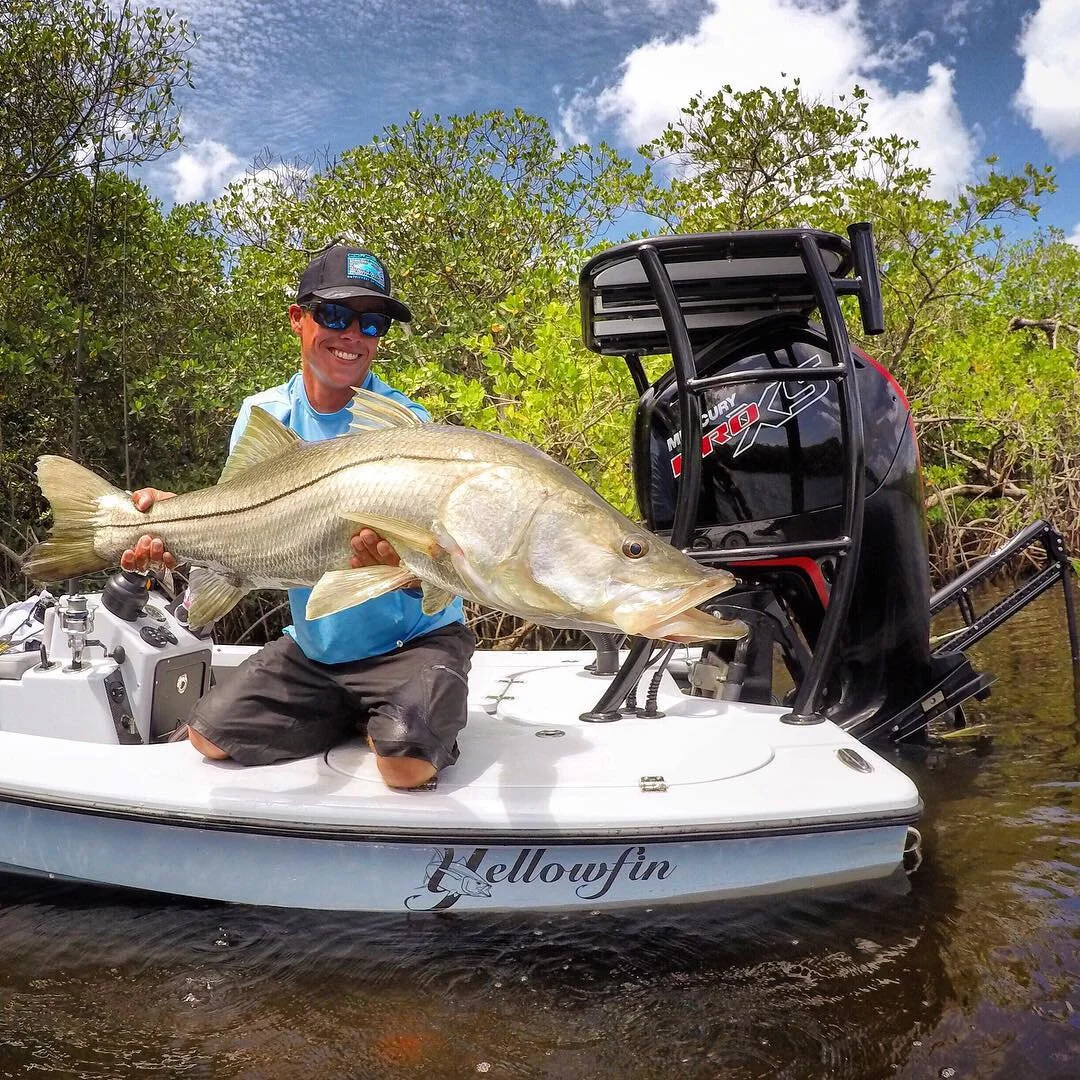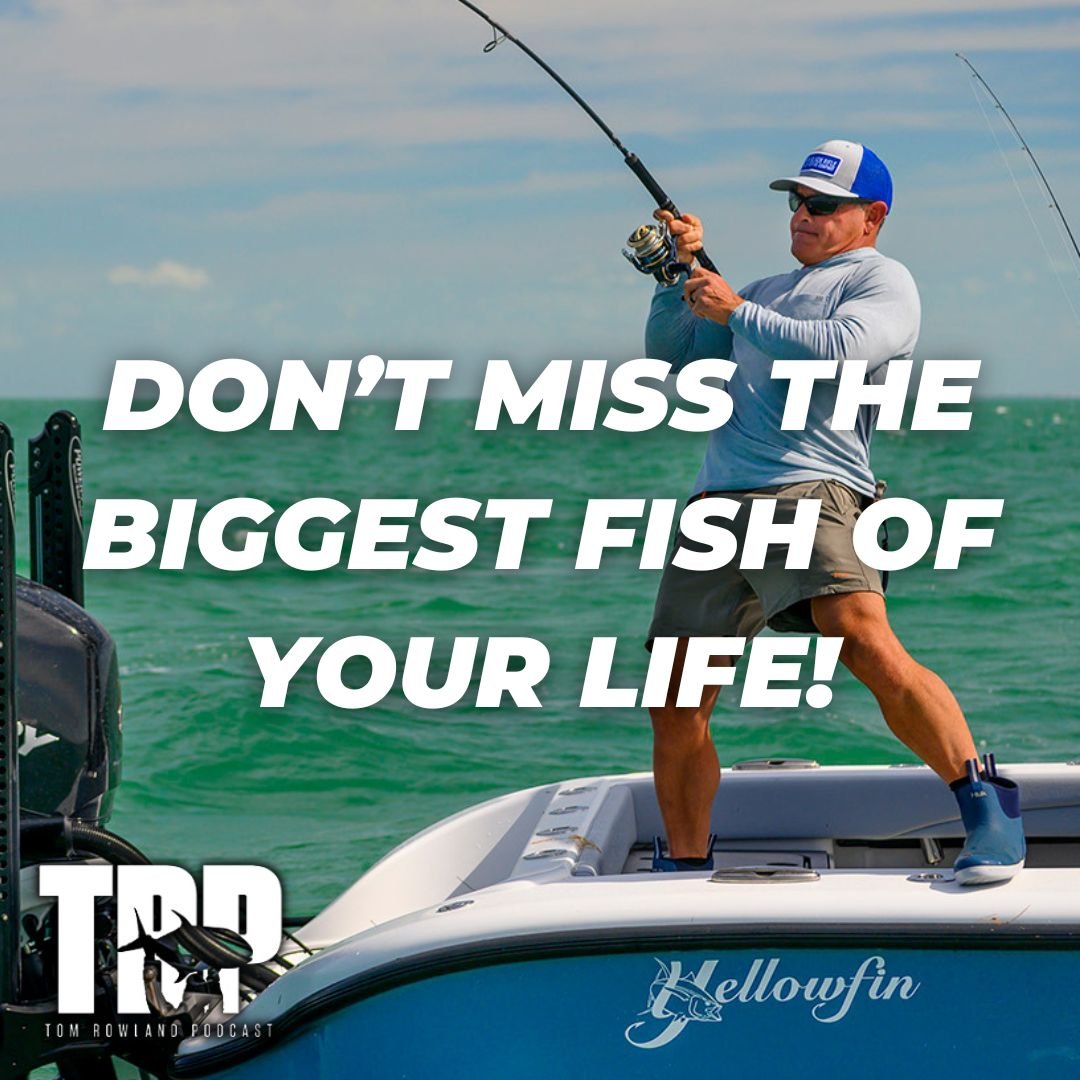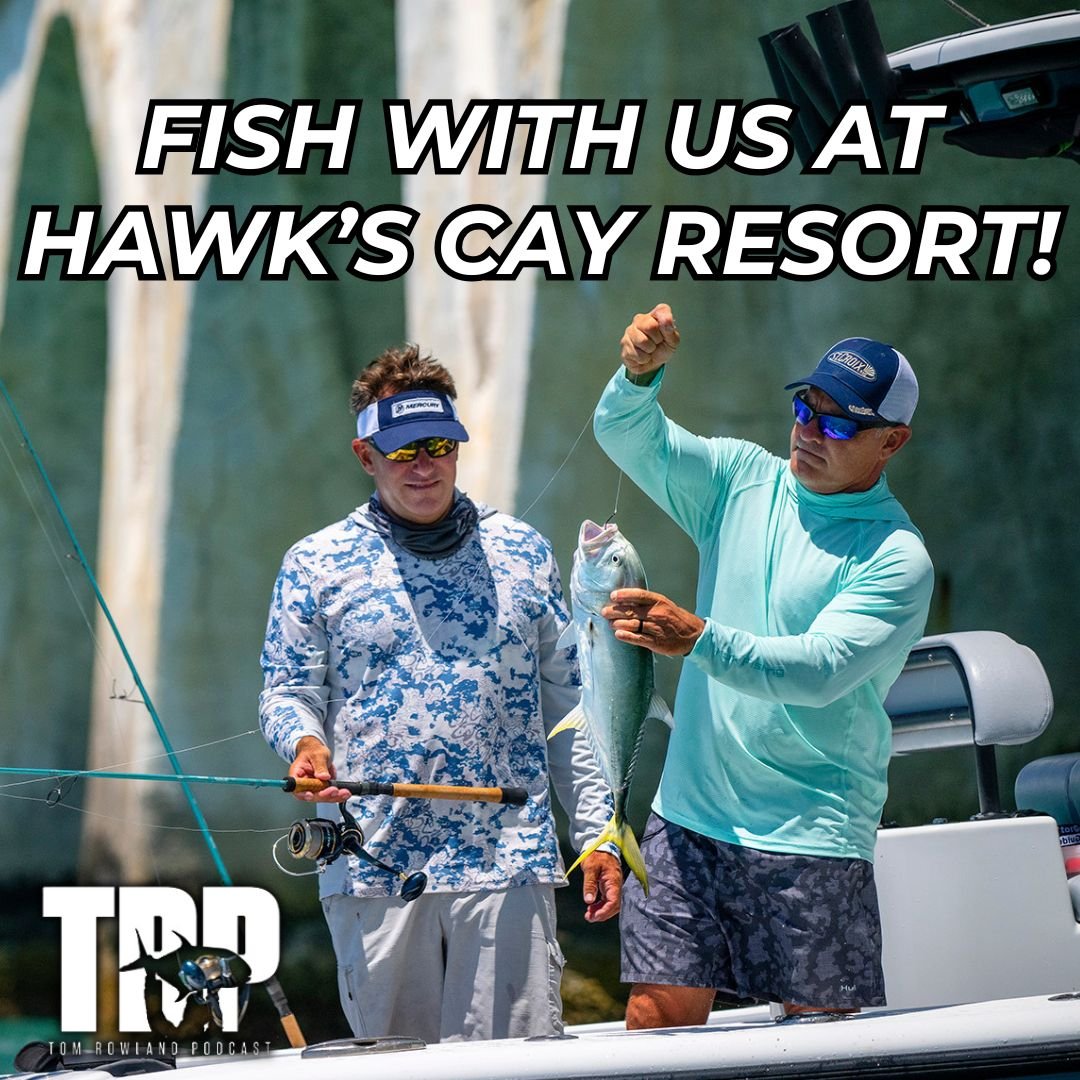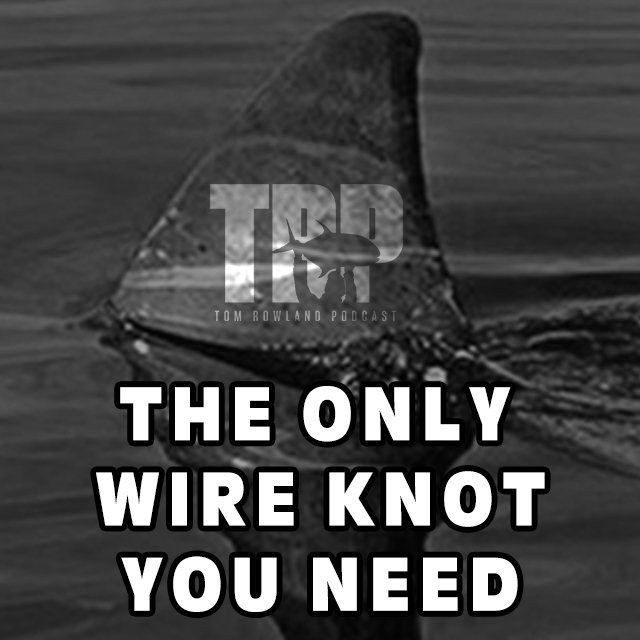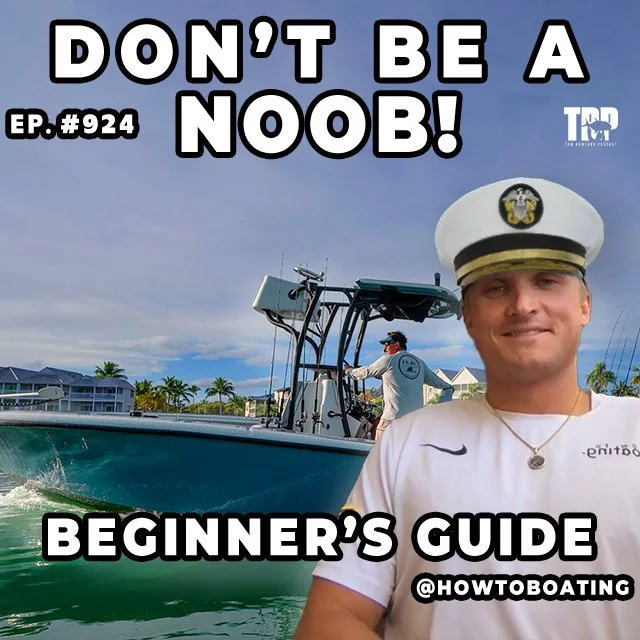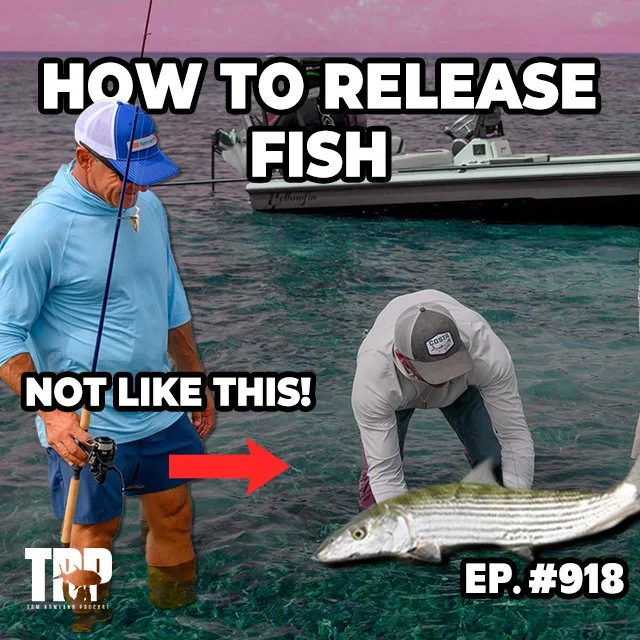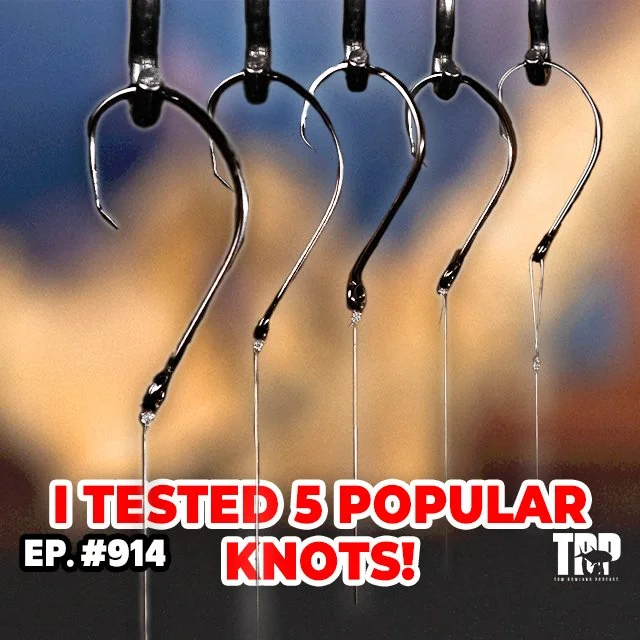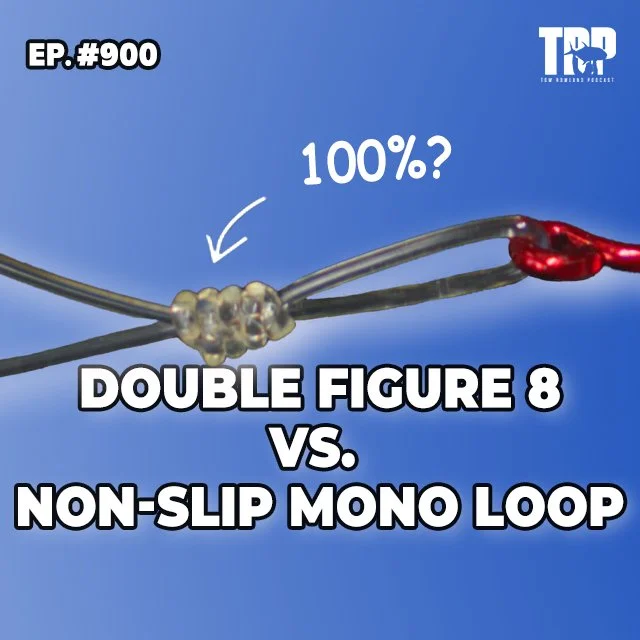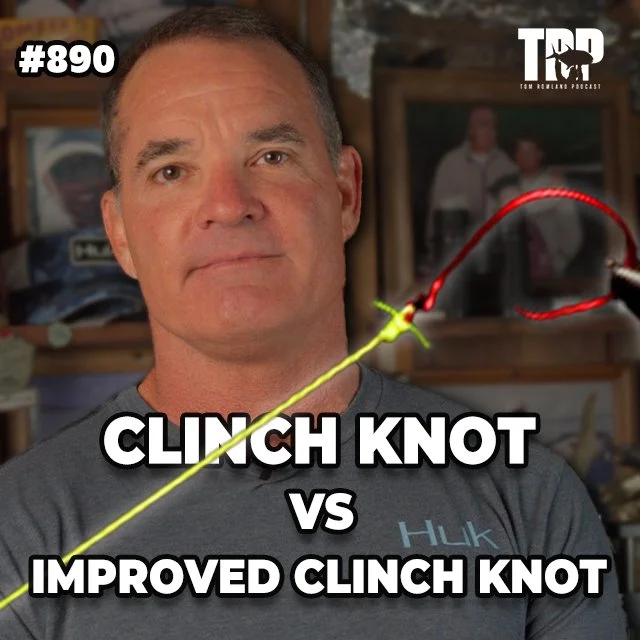How To Catch GIANT Snook Ft. Capt. Ryan Nitz
How To Catch GIANT Snook Ft. Capt. Ryan Nitz
TOM ROWLAND PODCAST
LISTEN NOW ON ITUNES, PODCASTS, SOUNDCLOUD, SPOTIFY, OR STITCHER!
Podcast Synopsis
This week I had the chance to sit down with Capt. Ryan Nitz. We had Ryan on the show a few weeks ago to talk about public land hunting, but what he is best known for is the massive snook that he targets. That is exactly what we are talking about today. I ask him many questions in this episode that will be helpful for the beginning angler to get on some snook, but will also be helpful for the more seasoned angler to find those bigger snook, and have success landing them. We go over tackle choice, leader and hook setup, and fish locations to help you have more success finding those trophy sized snook. Be sure to share this episode with someone who you think would find it beneficial.
This episode is brought to you by these great sponsors:
Barracuda Tackle - Makers of the best cast nets on the market BarracudaTackle.com
Empire Boat Covers - Protect All The Things You Love - empirecovers.com/TRP
Boat Hammock Stands - Comfortable Boating Awaits - boathammockstand.com
This episode has been brought to you by Waypoint TV. Waypoint is the ultimate outdoor network featuring streaming of full-length fishing and hunting television shows, short films and instructional content, a social media network, Podcast Network. Waypoint is available on Roku, Samsung Smart TV, Amazon Fire TV, Apple TV, Chromecast, Android TV, IoS devices, Android Devices and at www.waypointtv.com all for FREE! Join the Waypoint Army by following them on Instagram at the following accounts
@waypointtv @waypointfish @waypointsalt @waypointboating @waypointhunt @waypointoutdoorcollective
Find over 150 full episodes of Saltwater Experience on Waypoint
You can follow Tom Rowland on Instagram @tom_rowland and find all episodes and show notes at
Learn more about Tom's Television shows by visiting their websites:
Contact Tom through email: Podcast@saltwaterexperience.com
Podcast Transcript
Tom: (00:11)
What's going on, everybody? It's How to Tuesday! We have another great one for you today with my friend, Ryan Nitz. Ryan Nitz is known as a guy that catches a lot of big snooks. I had to see it for myself because I followed him on Instagram, and I saw all of these cool videos. He used to fish out of a canoe, which was interesting to me that he was catching these giant fish out of a canoe, and I had to see it for myself. So I started talking to him, we became friends across the internet. Later, to meet and do an episode of Saltwater Experience. We even got an episode in on the podcast. The picture that I chose for the podcast artwork is me catching a snook with Ryan Nitz. It's just cool. The fish that he catches are larger than, than our typical fish in the Florida keys. It was a dream fish for me to be able to go and catch one of those. Ryan has a way of catching these large snooks. So I wanted to get him on the podcast today to talk about catching large snooks. Also, we are going to talk about how to target snook in general. Snook are his main fish! He has an interesting perspective on it.
So Ryan, man, how are you doing today? First of all, it's good to see you, and I appreciate you doing this with us.
Ryan Nitz: (01:25)
Absolutely! It's good to see you again. Thanks for having me again.
Tom: (01:28)
Yeah, Absolutely. I'll talk about that show that we did a lot. It was one of my favorite shows. It was just so different and, you were just incredible, and you shared your knowledge with us. So I'm hoping that we can do the same with the podcast. We have many people interested in snook and, catching a snook, especially like the ones you catch, is a dream fish for so many people. Let's talk about snook in your opinion, like from A to Z. Starting small and working our way up. How do you target snook in general? After we get through with that if somebody wanted to go after a big one, what would you say? What would your recommendations be for there?
Ryan Nitz: (02:08)
I mean, I didn't start out catching 40-inch snook. That wasn't the case. When I first started snook fishing, I started catching snook like this. I did. I used to ride my bike when I was 12 down to this little side pond off the main river. I used to throw baby crappie jigs, and I would catch 12-inch snook all day long. That's how I started. And then, you know, you, sooner or later, you work your way up the food chain, and now I'm here catching 48-inch snook. Snook are just like largemouth bass. They're almost the same fish. If you're a bass fisherman, a lot of that applies to snook fishing.
Ryan Nitz: (02:51)
They like structure, current, a lot of bait, and whatever they can get their hands on. So when you're targeting fish, you're going to want, I think the biggest thing is moving water. I like moving water. I like getting a lot of current flow coming in and out. I've found you can catch snook in a lot of stagnant water, but just not numbers like you are in moving water. Small Yo-Zuri's and X-Raps are probably the best things to start locating small snook. Where I live in Jupiter, as you said, it's a pretty unique area. It's not like the Everglades, where there are mangroves everywhere. Mostly where I live, the main structure is docks. Docks are pretty much the key to small snook around here. Every dock has probably a few snooks under it.
Ryan Nitz: (03:41)
The way you would catch those are skipping baits under there. You can't skip a Yo-Zuri, so I would recommend a paddle tail or a shrimp. There's a lot of new companies out there that make great shrimp baits. Anything small, there are ones with weights built in them. You could whip them way under a dock, and you can't hurt the thing. So that's probably the best way to get out there. As you mentioned, a canoe, not everyone has the luxury of buying a boat. Well, I went out there and got a canoe with a trolling motor. I was out there for under $500. So you can go out there, get in a canoe and start skipping baby shrimps under these docks. You can start catching 20 - 25-inch fish on the regular.
Ryan Nitz: (04:25)
Now when you work your way up the charts, live bait is critical for me. Now being a guide, especially live bait, is going to be your best friend. Mullet, in particular, for me! When a snook gets 40 inches, that fish is probably 20 years old, and he's been around, and he's seen a few things. So having a live bait is going to be your best friend. You can use ladyfish, mullet, pinfish, greenies, or anything that wiggles because snook will eat it. I've caught them on needlefish too. I've caught them on pretty much everything. So whatever live bait, you can get your hands on. That's good. When you're targeting a big snook, leader material is everything. Don't go targeting big snuck on a 30-pound leader. Please don't do it. You're not going to catch them.
Ryan Nitz: (05:17)
60-pound fluorocarbon leader is what I use for the big fish, along with a 7/0 circle hook. I'm a big-time user of circle hooks, mostly because I'm a guide again. A lot of people don't know when they physically feel that hit. So if you're using a live mullet and you're not paying attention while fishing a big J hook, and a snook eats it, and 30 seconds later you feel it, that J hook will be gone into that snooks throat. So big user of circle hooks. I like to hook mullet in the face because a lot of times, I'm trolling them. You can troll a mullet behind the boat, a super useful technique! Probably the number one effective way of finding snook is trolling a mullet 30 feet behind the boat. You're going to troll around for 20 minutes; you're going to catch something. And then, you can stop there and work your way from there.
Tom: (06:11)
When you are doing that trolling, do you do that with a big motor or the trolling motor?
Ryan Nitz: (06:16)
It doesn't matter; snook doesn't care. There not boat shy at all, as a Redfish would be. That motor could be an old, two-stroke making as much noise, and I've seen snook come up and eat right there at the propeller. Same with the Tarpon that we have around here. Tarpon is not boat shy either. They'll come and slap the boat, eating a mullet.
Mangroves, though, if you do have mangroves around where you live, that is probably the best estuary for a small snook. So I would start there. As I said, I don't have the luxury of that here. It's mostly docks, million-dollar houses, seawalls, and sandbars. When you see a snook on a sandbar, a hundred percent, they will eat. When a snook is on a sandbar, he is doing one thing and one thing only, and he's hunting.
Ryan Nitz: (07:04)
So what I like to do, my favorite tide is a dead low. When you're fishing a dead low tide, that's half the water that they can hide. All the mullets are not up high, in the mangroves, or around docks. They're all out in the channel and on the sandbars. So, if you're going to go out snook fishing for the first time, wait for a dead low, go out there, find the bait, find the birds. If you see on Osprey, or if you see a Blue Heron, pay attention! Those two birds right there are like a frigate out in the ocean. You see a blue Heron or an Osprey that means there's mullet. If there's mullet, there's snook. It all goes hand in hand.
Tom: (07:44)
Let's go back to the setup real quick. You said a 7/0 circle hook. Is there a particular brand that you like?
Ryan Nitz: (07:52)
I'm a pretty big fan of Owner Mutu Light or just the regular ones. I'm a fan of Owner Hooks, but they all work. Also, they all have their flaws. I've broken hooks on all of them. So there's not one that I like over the other, but probably Owner. I stick with them mostly!
Tom: (08:11)
When you start targeting smaller snook like maybe you're not ready for the big snook. You hadn't entirely made it that far in your fishing career, and you're targeting the smaller snook, maybe with smaller live baits and stuff. How do you adjust the hook size and the leader size for like 20 to 25-inch fish that you're catching lots of numbers?
Ryan Nitz: (08:34)
Right. So basically, it's the same setup, just smaller. If you're targeting slot size fish 20 to 30-inch fish, I will probably use 30 to probably 40 pounds. 40 pounds, probably being the best with a 1/0 circle. It's all going to depend on the bait that you're using. If you're using a shrimp, you're going to want the smallest hook you can use because shrimp can't carry anything more significant than a 1/0 hook effectively. A mullet is a hardy bait. You can throw a big old hook on that thing, and it'll carry it around pretty good. So I do like a 7/0 hook for those mullets. It's just relative to what you're using for bait. Anywhere from, and don't be to use a small hook. You know, many times you can throw a 1/0 hook in a decent size mullet, and it still works.
Ryan Nitz: (09:26)
It'll get the bite because I've seen snook so many times come up to live bait and just put their nose in it. They're looking. They see the line, they see that hook, and they'll veer off. So when that starts happening, that's when you're going to want to downsize. I'm just big on not using anything too light. If you're fishing for a big snook on a 3000 size reel in the backcountry, you're going to kill that fish. Don't do that. There's not a lot of oxygen back there in the backcountry. So I like to use a 6,000 size reel.
Tom: (10:07)
To be clear., when you say that about a 3000 size reel, why would you kill the fish? So that people understand what you're talking about
Ryan Nitz: (10:17)
When fishing with a small reel and hook into a giant fish, it will take longer to catch them. It's going to take 10 minutes. During that 10 minute battle, that fish is building up many acids and, it's just beat. Well, when you put them back into those low oxygen backcountry areas, and you don't give them a proper revival, he's going to die. So what I like to do is just beef up my gear a little bit. You're going to get those fish in half the time. They're going to be still green, not green, but they're still going to have some life in them. You're not fighting them to the death. Now that switches if you're out there on the ocean. We get snuck out on the ocean and the beaches; those fish are a whole different animal out there.
Ryan Nitz: (11:01)
They got a lot of life in them. You can fish them on fly rods, and they'll be fine. So be careful with where you're at and pay attention to the oxygen levels. The big thing around here that I hate, you get people out here, they throw the snook back, and you'll see them belly up 30 feet behind the boat. They didn't revive them. Or you get these guys on the bridges who will bring a snook up in a bridge net and then throw it off the bridge. I'm not too fond of that; it drives me nuts and makes my blood boil. Do not do that if you're watching this.
Tom: (11:34)
A Snook is a pretty hardy fish, but any fish like it, you can even take as a giant Tarpon, and if you let them go and they sink to the bottom and no oxygen, no water is moving through their gills. They're not getting any oxygen. They will just lay there and die. Sometimes it's as easy as pushing them with your rod tip just a little bit to get them moving. That's useful tips on reviving them. Snook are an exciting fish that you can use the old trick of letting them hold onto your thumb until they're ready to go. That's a perfect trick. They will bite down gently on your thumb until I mean, I guess it depends on how big, some of the ones you have.
Tom: (12:17)
I'm afraid to put my hand in their mouth. It's like an alligator, but snook will still hold on to your hand or your thumb. When the fish get some strength and everything, they go off on their own; you can call it a rule of thumb, no pun intended. That's a way that you can kind of gauge whether or not they're ready to swim off because if any fish sinks to the bottom and does not get any air or oxygen going through their gills, it's not a very good release. So get them moving.
Ryan Nitz: (12:51)
Another big thing is, especially in Jupiter, the last few years are the sharks. We have a lot of bull sharks. So if you, you know, if you send a snook off on its way and it's not revived as that's shark food, I've seen it happen. I've seen it happen. Snook barely revived, just sitting on top of the water. Them sharks are ready to go. We have a lot of pups, two to three-foot bull sharks. What sucks is those sharks will kill a 45-inch snook because what they'll do is they'll just come up, and they'll nibble on its tail, and it'll kill the fish just cause it just ate its tail because it didn't have the energy to get away from that little shark.
Tom: (13:28)
Alright. Great tips, man. I know that you're doing a lot of guiding these days. If somebody wanted to experience some of this snook fishing with you, how would they do it?
Ryan Nitz: (13:39)
Instagram, @Ryannitz, R Y A N N I T Z, or shoot me an email, Ryannitzphotography@gmail.com. We can catch snook all year round here, but if you want to catch a giant May through September, that's prime time. We're winding on the back end of that now, but you know, we got the mullet run coming in and, they're still around. So, but yeah, May through August, that's prime time. That's when there are 40 - 45-inch fish all over the place!
Tom: (14:09)
I strongly encourage you to check Ryan out, check out what he does on Instagram. If you can and have the time to go down there and fish with him yourself, it's a great experience. Ryan, thanks for doing this with us. I appreciate it. I'm sure that you're wearing your camo. So I'm sure that you're headed out to the woods right now.
Ryan Nitz: (14:30)
I just got back from the woods and headed back out.
Tom: (14:34)
All right. Okay. Thanks, man. And that's How 2 Tuesday for today. We will see you guys next week.

